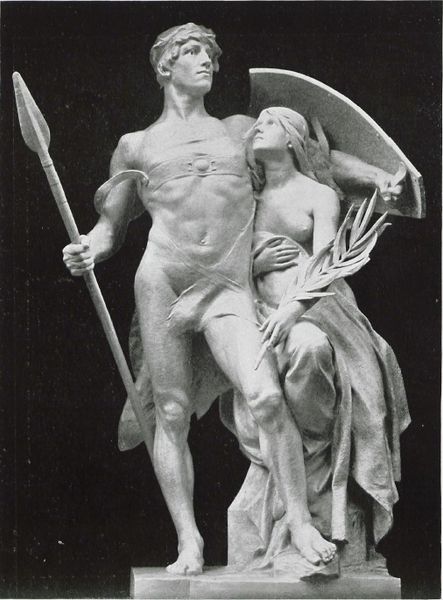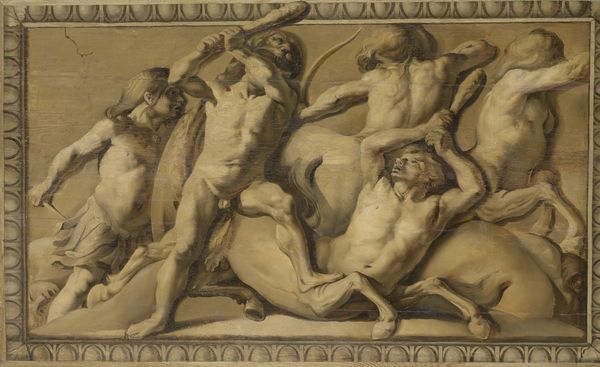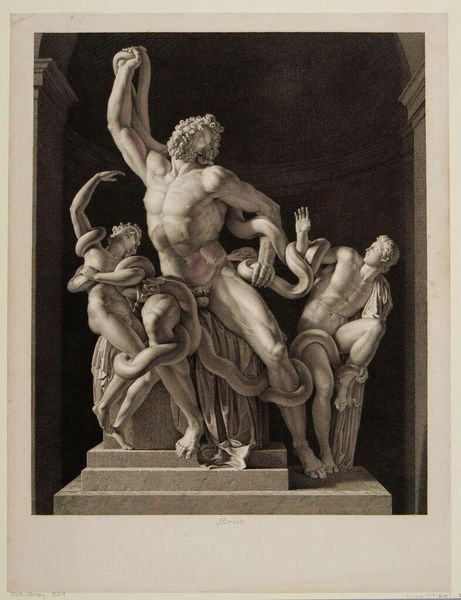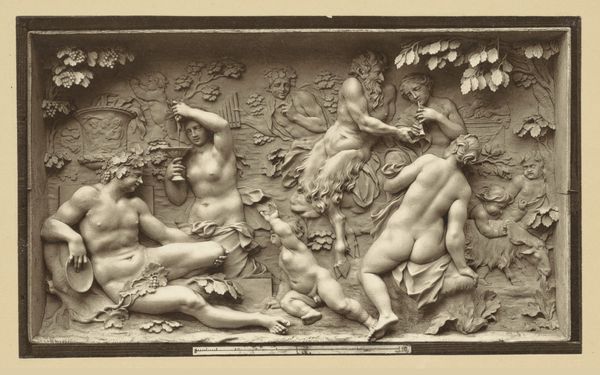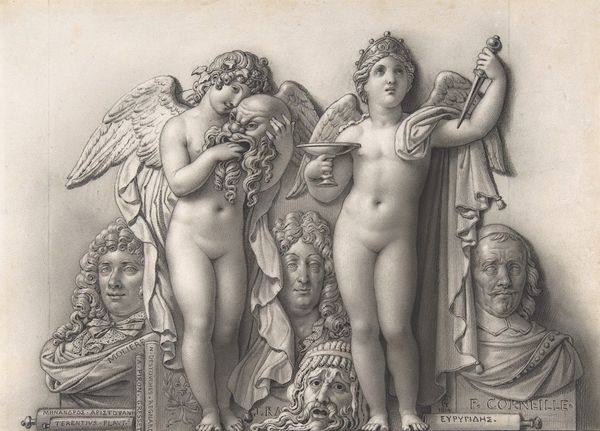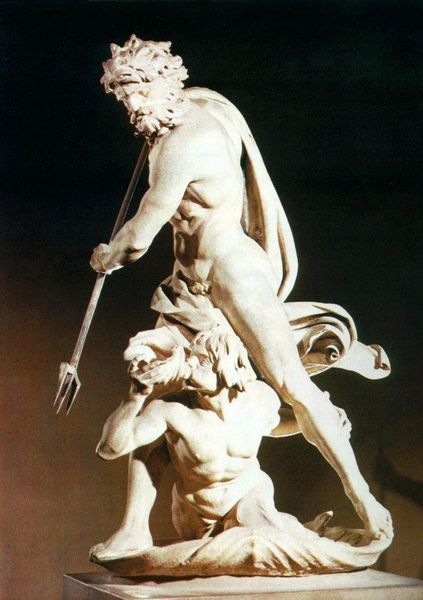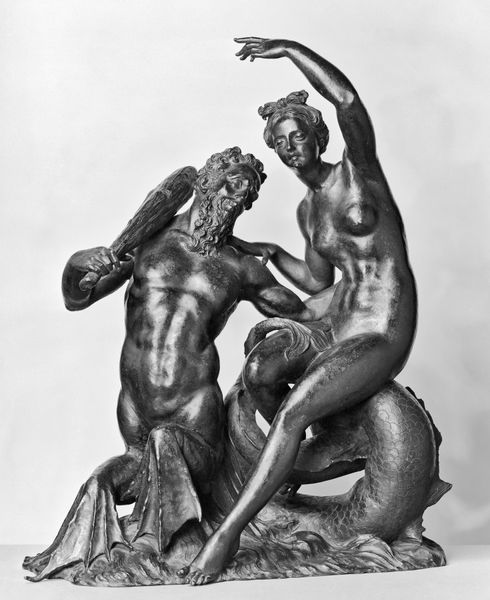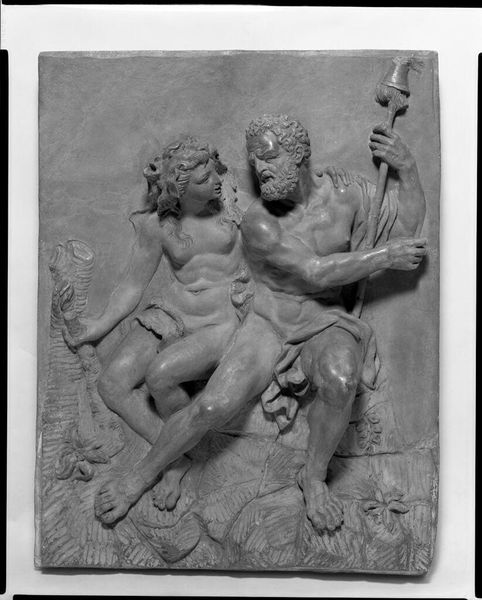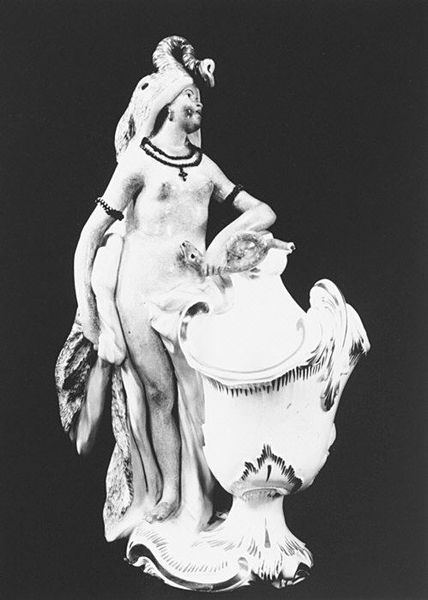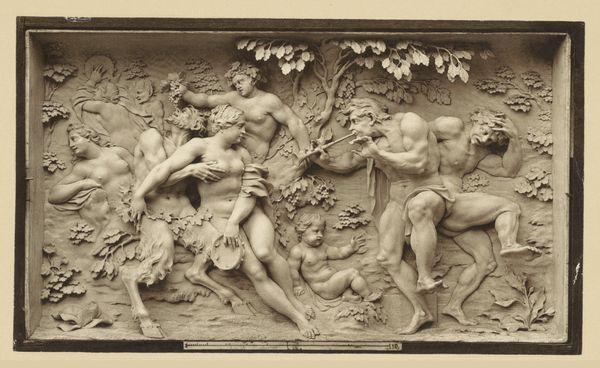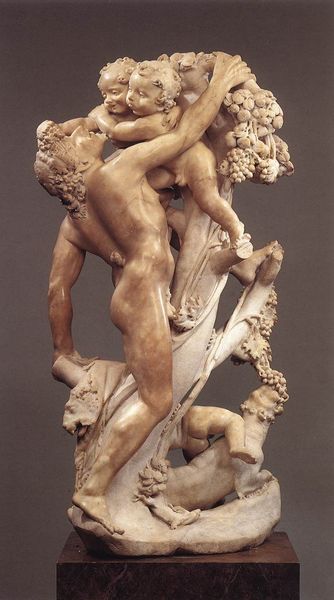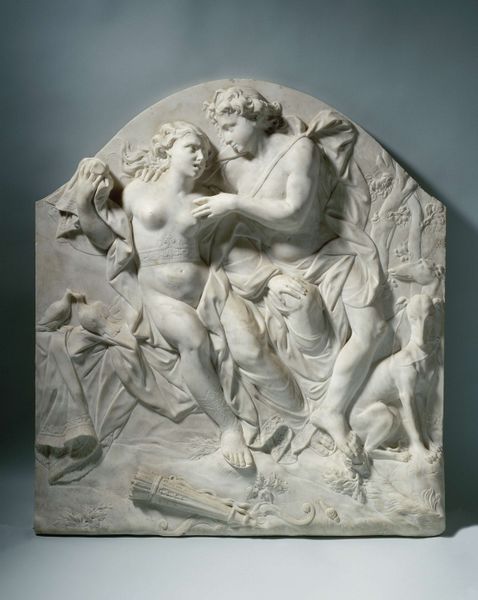
Copyright: Arno Breker,Fair Use
Editor: This is Arno Breker's "Apollo and Daphne," created in 1940. It appears to be a marble relief sculpture. I'm struck by the dynamism of the figures, they seem to be propelled forward. What story do you see this artwork telling? Curator: Beyond the obvious mythological narrative, I see a fascinating dialogue on the role of artistic production during times of political upheaval. Consider the context: Breker produced this during the Nazi regime. The glorification of the human form, the emphasis on idealized beauty, all rendered meticulously in marble…it’s all part of a calculated manipulation of materials. What kind of message was Breker intending to deliver? Editor: So, you're saying that the material itself – marble, something historically associated with power and classical ideals – is being used to legitimize something potentially sinister? The traditional association of marble with ancient rulers makes the question more pressing. Curator: Precisely. Marble isn’t just a neutral material; it carries cultural weight. By employing it in a highly skilled, academic style, Breker links his work to a specific tradition and idealizes this vision of humanity as he wants the patrons to embrace it. It elevates what? That's the key. Is the consumption of materials intrinsically tied to politics and societal context? Editor: I never thought of it that way before. The choice of material and style isn't just aesthetic, it's a political statement in itself. Are we focusing enough on those socio-economical considerations behind creation of what are deemed "masterpieces?" Curator: Absolutely. Thinking critically about how materials and processes are employed helps us deconstruct power dynamics embedded in art. Every choice reflects on the value placed on both resources and intended audiences. It requires us to question the motives. Editor: I learned so much about questioning not only what is shown in art but how it is crafted, who it's made for, and why certain material choices become the basis for historical validation. Thanks!
Comments
No comments
Be the first to comment and join the conversation on the ultimate creative platform.
